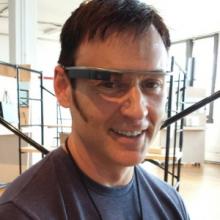Recently I was invited to attend a working session with folks from the White House, Gates Foundation, National Science Foundation, U.S. Department of Energy, Battelle, American Council on Education and others from around the nation. The White House challenged the people involved to create actionable items that could be developed into workable solutions for education. As a participant, I wanted to share a few items of particular interest that were discussed at the conference.
The diverse background of the panel participants represented the perspectives of the decision makers in education all the way from federal officials to the decision makers at home, and included a former chancellor, a charter school principal, a teacher and a parent. More about the initiative behind the meeting can be found at: http://www.ed.gov/edblogs/technology/evidence-framework/.
The first speaker, Harold Levy, former New York City Chancellor, discussed the complexities of decision makers in education and issues with schools’ inability to identify quality electronic resources and content. He noted that schools have trouble selecting quality content due the lack of available resources, knowledge and access to research. Additionally, technology vendors often make and sell product based on profit potential rather than quality.
Seth Andrews, from a charter school, said the process for purchasing tools or curriculum is broken. He asked, “How do you give good tools to schools versus [a] big show for poor tools?” He suggested an open dialogue with the CEO of any Learning Management System who is willing to make changes to meet the needs of the educator. In addition to open communication, Seth recommended the need for good API’s in order to integrate external tools. One of the most profound statements he made was to describe how a district wired a bus to allow a school to have Wi-Fi during the day and then to drive the truck to neighborhoods to have a hot spot at night. Now that is using technology as a tool to meaningfully change education.
Emily Davis, a former schoolteacher who now works for the U.S. Department of Education, said teachers are looking for guidance in making good decisions. Her three points, which all teachers should be aware of when making decisions, were:
- Accessibility to information to making good decisions
- Assessments, teachers should start with the end in mind
- Audience, keep the teacher voice in the conversation
Lastly, she reminded all of us that the decision a teacher makes affects all students.
Regina Schofield, a parent, asserted that she needs access to tools that make her life easier: resources to help her stay informed, as well as to help her assist her child with schoolwork.
The last voice was that of Aimee Kennedy, a school principal from Metro High School. Aimee said teachers need adaptive tools that allow them to make changes and do not require hours of professional development. She noted that technology is not a singular solution; rather it is an ecosystem of tools that support the educational needs of the students. Tools for this type of environment must be clear and easy to use, freeing a teacher’s time to work with the students, instead of learning the technology.
There are several main take-aways from the discussions. The first was that when technology is being selected, the teacher should always come first. Technology that is not understood will reflect in the performance of the teacher’s ability to provide quality instruction. Tools that are complicated or poor consume precious time of the teacher and steal time from the student. Technology companies must work harder on common industry standards, interoperability, listening the voice of the teacher and making changes to meet the needs of their customers, i.e. the teachers.
I encourage teachers from around the state to provide me input as to your technological needs. I want to hear from you. Please respond to this post or send me an email to bhenry@oh-tech.org.



